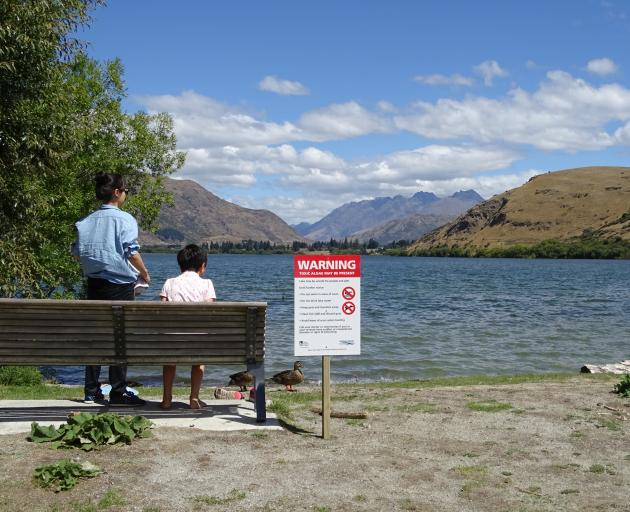
The Otago Regional Council placed signs around the lake yesterday recommending people and dogs ''avoid contact'' with the water after cyanobacteria scums, or blue-green algae, were found over the weekend.
Detailed results of testing would be available today, but the visual presence of cyanobacteria put the lake at warning levels.
ORC environmental resource scientist Rachel Ozanne said it was ''unusual'' for the algae to occur in Lake Hayes. The last known bloom there was in 1981.
''With hot, calm conditions and the abundance of plant nutrients, phosphorus and nitrogen in water, the conditions are right for blooms to occur.
''They can develop rapidly and unpredictably and in some cases can produce toxins that are harmful for people, as well as animals.''
The algae bloom was ''enjoying'' the stable conditions the lake offered at present, having been exposed to long periods of hot weather and high light intensity, as well as ''an abundance'' of nutrients.
The lake was also stratified, occurring when the top layer of the water column became warmer and the lower layer remained cooler, she said.
''When the two layers stop mixing, the upper layer becomes more stable and blooms are supported.
''The bloom is likely to persist until less stable environmental conditions emerge, or the thermal stratification breaks down.''
Because the cyanobacteria scums were wind-blown, particular areas of the lake may look clear from the blue-green algae and safe to swim in, but toxins could persist after the bloom had dissipated, so people were advised to avoid all contact with the water.
The bloom was not present in Mill Creek, which feeds Lake Hayes, except from at the confluence with the lake.
Earlier this month, the ORC advised cyanobacteria alerts for the Cardrona River and the confluence of Dunstan Creek and the Manuherikia River. Lake alerts were in place for Tomahawk Lagoon and Falls Dam.
Exposure to cyanobacteria may cause skin rashes, nausea, tummy upset, and tingling and numbness around the mouth or tips of fingers.
For dogs, exposure to algal toxins could be deadly and the ORC recommended they were kept away from the water and prevented from eating any algal material from the water or on the banks.
Anyone who suspected their dog had eaten algae should contact a vet immediately and anyone experiencing health symptoms after contact with contaminated water should visit their doctor.











